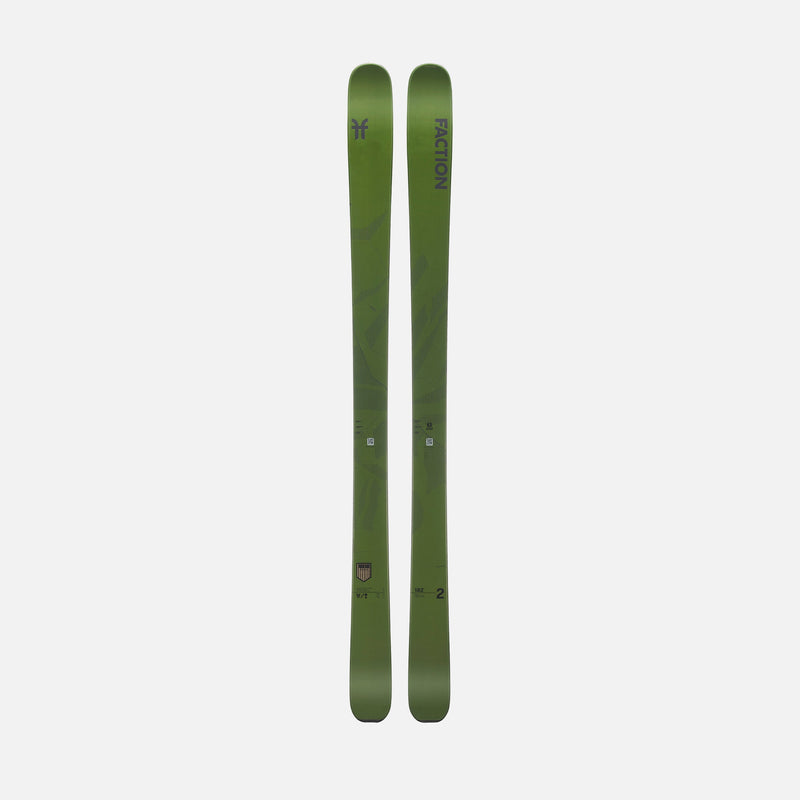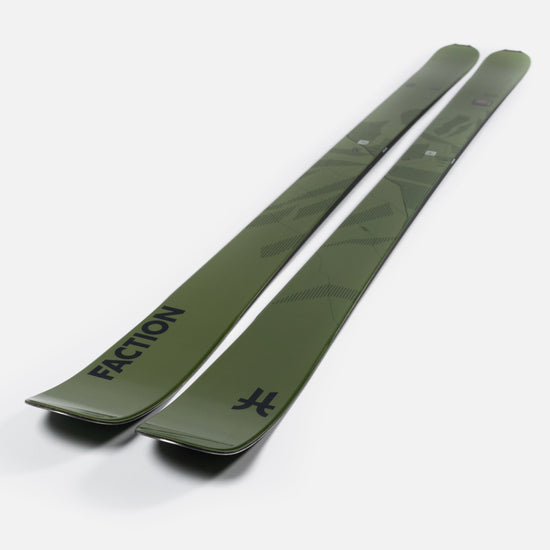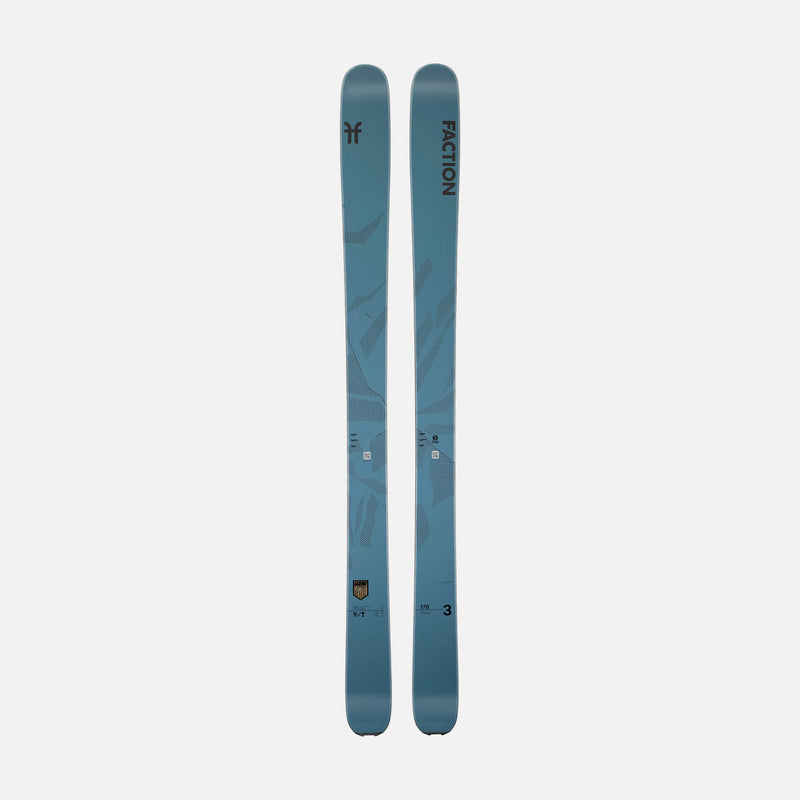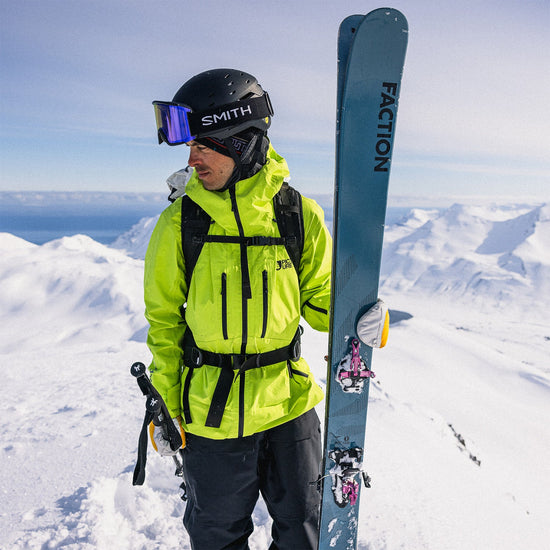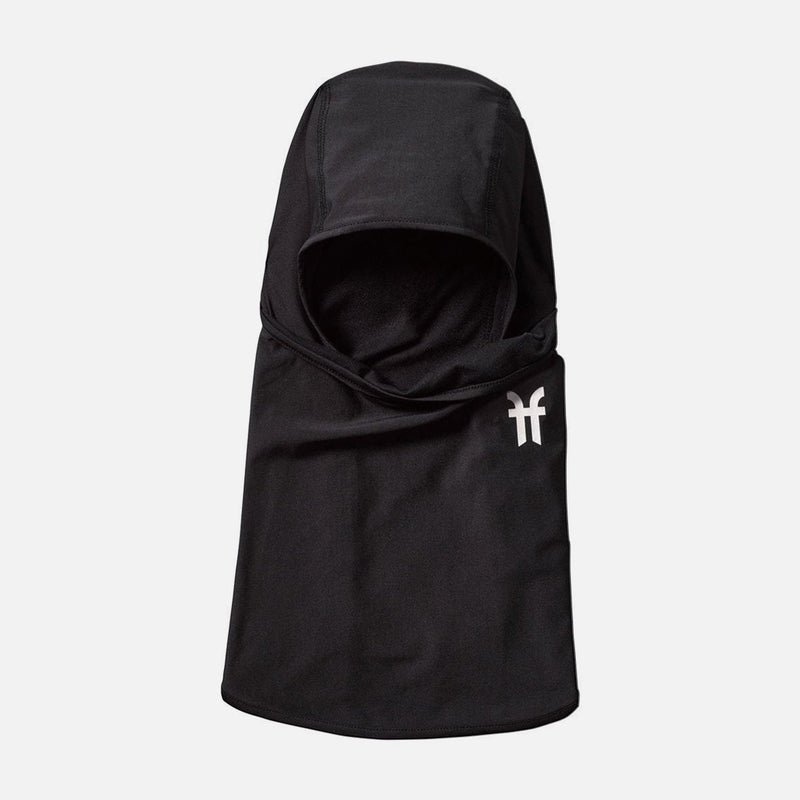
Packing for your next ski touring trip? Let leading ski-mountaineer and Faction athlete, Sam Anthamatten, run you through his kit list and prepare for his high-altitude, high-octane itineraries.
Have a plan
When making a plan for your ski touring adventure take into account the following:
- Weather conditions: Checking the forecast will allow you to find where the best snow will be and where you can find protection in case of bad weather. The most important weather conditions to be aware of are: visibility, winds, storms, and temperature. Always check the weather before you go into the backcountry and make changes to your plan based on the conditions.
- Avalanche risk: Check the avalanche reports in your area before you go into the backcountry and avoid the slopes that are most at risk. Also be aware of past avalanche conditions and problems. This will give you a better understanding of the state of the snowpack and a better idea of what to expect.
- Assemble a team: Touring with your friends is more fun and safe. Pick partners that you feel comfortable with from a decision making standpoint and ensure everyone is aware of each other's experience. A group of 2-6 is ideal for being fast and making decisions more efficiently.
- Route planning: Pick a route everyone in your group feels comfortable with from a skill standpoint, both uphill and downhill. Think about where the snow will be good and avalanche danger low. Avoid avalanche terrain if the risk is high and ensure you test the snowpack. If your group does not have the knowledge to test or analyse the snowpack, take extra caution in picking your route.
- Determining duration: Plan a timeline for your day, from leaving your house to getting back. Have an idea of how long the climb will take as well as the descent. Add some wiggle room to make sure you get home before dark.
- Emergency plan: Have an emergency plan set in case something goes wrong. Make sure everyone in your group knows who to call or what to do in case of the worst. Make sure you have the necessary gear and knowledge to deal with an emergency in the backcountry. If you won’t have reception in the backcountry, pack a satellite device to call for help if needed.

Packing your bag
Pack based on the order and importance of what you will need.
For example, Sam packs a down jacket as he will be going up to a glacier. However, he packs it at the bottom of his bag as he will start in Zermatt where it is going to be warmer, so he won’t need his jacket until later in the day.
Essential items to carry in the backcountry:
Backpack: Make sure your backpack is big enough to carry all your items. 25-40 liters is a good size for a day-pack. If it's a backcountry bag it will have a specific pocket for your shovel and probe, make sure nothing else is stored in there.
Avalanche safety gear:
- Avalanche transceiver / beacon: Make sure your beacon is turned on, has new batteries, and is stored 1 foot or 30cm away from your phone.
- Avalanche Shovel: We highly recommend using a metal shovel over plastic for the added durability.
- Probe: Make sure your probe has a metal tip and is at least 2.4m. Carry it outside of the pouch it comes in for added efficiency.
- Helmet and goggles/sunglasses: 25% of avalanche victims die from impact, wear a helmet.
Emergency equipment:
- Headlamp: If something happens and your backcountry adventure takes longer than planned, having a headlamp can be extremely helpful if suddenly it's dark.
- First aid kit
- Repair set + knife
- Bivy: In case of an accident, a bivy bag can prevent the onset of hypothermia.
Clothing:
- Waterproof layers: Your first layer of protection from the elements
- Down jacket: to keep you warm on the early morning skin track or on top of the windy ridge.
- Base layer: Pick a quick drying base layer to avoid sweat persisting. Being wet in the backcountry can be very dangerous as temperatures drop.
- Hat or beanie
- Sunglasses
- Gloves: Pack lightweight gloves for the climb and some regular ski gloves or mittens
Other:
- Water
- Snacks
- Sunscreen and lip balm
Ski mountaineering gear*:
- Harness
- Ice axe + crampons
- 30m/60m rope
- Rappel setup
- Crevasse rescue setup *To use this gear properly you need experience and training, hire a mountain guide if you want to do ski mountaineering and don’t have the knowledge.


Ski gear
Skis: Touring skis are lighter than regular skis to help keep your legs fresh during a prolonged effort. Here are some of Faction’s most popular touring options:
- Agent 3: Sam’s choice of ski. The multiple award-winning Agent 3 touring ski features a lightweight core, 106mm waist, progressive shape, high-tech carbon weave, balanced flex, and expertly engineered rocker.
- Agent 2: Whether seeking untracked powder or springtime couloirs, the Agent 2 is your go-to touring ski for escaping the everyday grind.
- La Machine 2: The La Machine 2 touring ski is the next step up in our carbon-loaded touring skis. These 99mm-waisted feather-light skis boast a unique, progressive design tailored specifically for off-piste adventures.
- La Machine 3: Balancing float and supreme torsional stability, the La Machine 3 at 109mm underfoot holds its own when conditions far off the grid can vary widely between floating in powder and navigating sharky hard-pack.
Skins: Pair your Faction touring skis with the perfect skins to have the best experience on the uphill:
- Multifit climbing skins: for the Agent 3
- Agent 2 Climbing Skins
- La Machine 2 Climbing Skins
- La Machine 3 Climbing Skins
Poles: Our telescopic Agent Poles are a great option for touring as they allow you to change the height for the way up and way down.
Boots: Touring boots have pin inserts in the toe and heel and a walk mode which unlocks the cuff allowing you to walk with more comfort. A good option for a touring boot which walks uphill with ease and charges downhill is the Phaenom fr collection


Decision making in the mountains
Sam advises: “Be honest with yourself when making decisions. Be honest with what you have seen on the avalanche bulletin and on the weather forecast. Listen to your feelings, pushing may not be the right way. If you’re not feeling secure, take a guide so a more experienced person can help with informed decisions. I often turn around, that's part of the game. It’s cool to come back and repack your bag for new adventures!”
Turning around is always a good decision. Being emotionally attached to a line or an objective can lead to dangerous decision making. The mountain is not going anywhere, if you are not sure come back with more experience, training, and better conditions.
Continue learning and gaining experience. Avalanche training and education is a life long journey, there is always something to learn.

General ski touring guideline to follow
Prepare
- Continue avalanche education
- Practice rescue
- Track yearly conditions
- Investigate trip options
Plan
- Assemble your group
- Anticipate the hazard
- Plan your route
- Discuss an emergency plan
Ride
- Conduct departure check
- Monitor conditions along the way
- Check with group and reassess plan
- Recognize avalanche terrain
Debrief
- Summarize the conditions
- Review your decisions
- Improve your plan
*This is not a substitute for real avalanche training and rescue. Make sure to be properly trained and ready before going out into the backcountry.*
